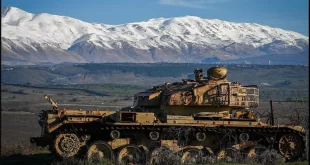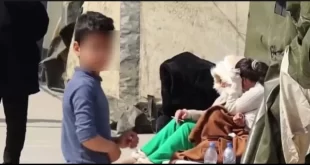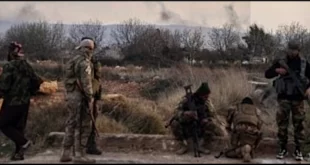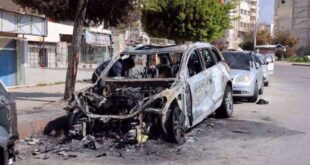Dec 4, 2014, UN Tribune
UN troops monitoring the 1974 ceasefire between Israel and Syria have witnessed interactions between members of the Israeli Defence Forces and the Al Nusra Front who have taken over a large part of the Golan Heights.
The information is included in a report by Ban Ki-moon to the Security Council issued on Thursday on the activities of the UN Disengagement Observer Force. The peacekeeping mission was forced to relocate its troops from the Golan because of a deteriorating security situation which included 45 Fijian troops kidnapped by the rebels in August.
In the report Ban writes, “Following the evacuation of UNDOF personnel from position 85 on 28 August, UNDOF sporadically observed armed members of the opposition interacting with IDF across the ceasefire line in the vicinity of United Nations position 85.” [see map]
The bulk of the 930-strong UNDOF force have relocated to the Israeli (Alpha) side of the ceasefire line while the mission maintains some positions in southern and northern (Mount Hermon) parts of the Golan Heights. Because of the limited capacity to perform its mandate, Ban has recommended reducing the force by some 200 troops.
In their hasty withdrawal from positions in the Golan in mid-September, the troops were unable to secure all of their assets. “Unfortunately some assets and equipment were left behind,” Ban writes. UN Tribune reported in September that Al Nusra had previously seized several UN armored vehicles as well as taken command of facilities the UN had vacated.
Ban identifies Al Nusra as the group behind the kidnapping of the UN troops. “It should be noted here that from information posted on social media as well as in the course of its efforts to secure the release of the peacekeepers, the United Nations learned that its personnel had been taken and held by members of the Nusra Front. There were indications that the Nusra Front intended to detain additional UNDOF personnel and take from UNDOF more weapons and vehicles as opportunities arose.”
In the report, Ban writes that the Syrian government had threatened to bomb camps hosting IDPs in the Golan Heights.
“During the reporting period, UNDOF observed two tented camps housing internally displaced persons in the vicinity of United Nations position 80…UNDOF estimates that from 60 to 70 families live in the camps…Late in September, the Senior Syrian Arab Delegate sent a letter to the UNDOF Force Commander stating that the camps for internally displaced persons were not used for humanitarian reasons but as a base for “armed terrorist” groups who also crossed to the Alpha side. The Delegate
requested that UNDOF remove the camps within a period of 15 days, after which the camps would be considered a legitimate target for the Syrian armed forces.”
UNDOF informed the Syrian delegate that it was not in its mandate to relocate civilians displaced by conflict and urged that no attack be carried out. In addition, the ICRC were informed of the Syrian request, the report states.
It also says that Syrian forces have withdrawn from a number of locations in the ceasefire area. “Over the course of the reporting period, the Syrian armed forces withdrew from additional positions and checkpoints in the areas of separation and limitation, leaving armed groups in control of more territory in the UNDOF area of operations.”
 Syria Support Movement solidarity with the Syrian people
Syria Support Movement solidarity with the Syrian people




